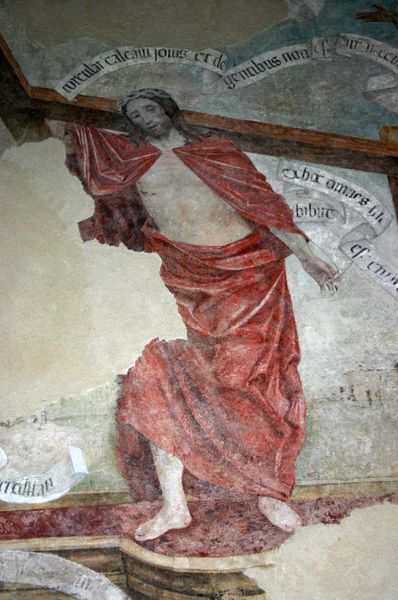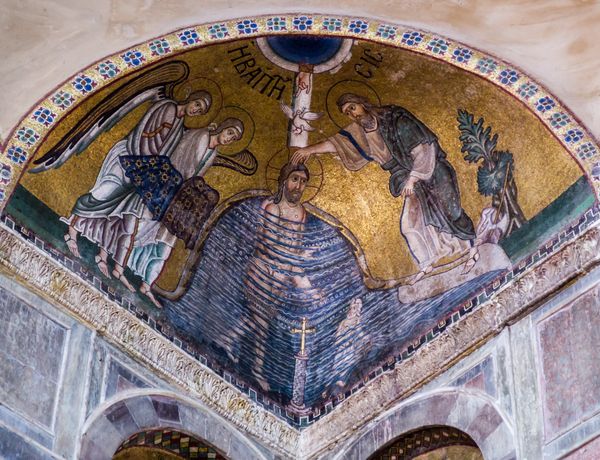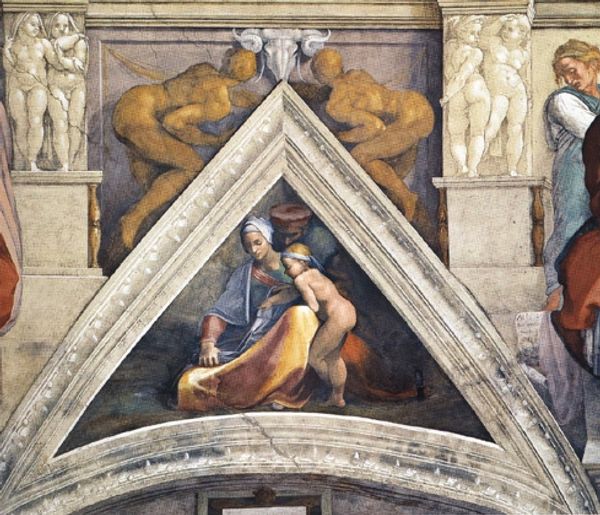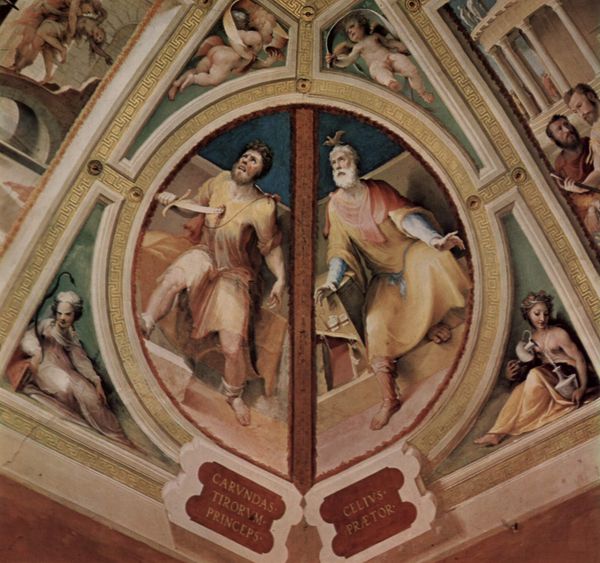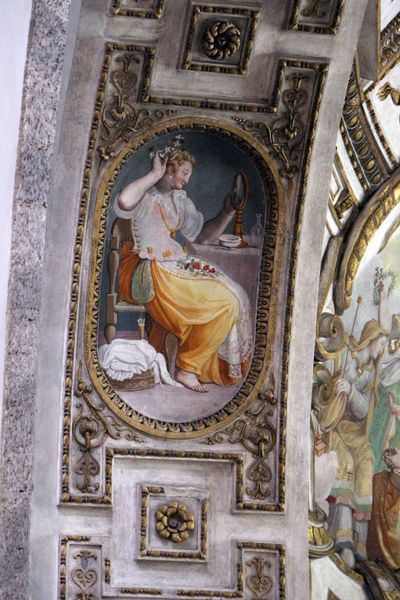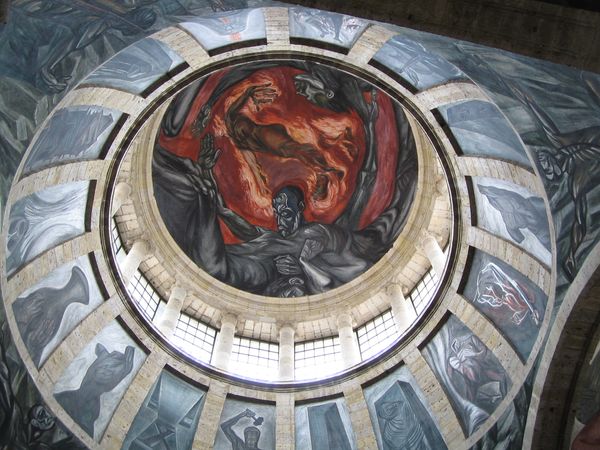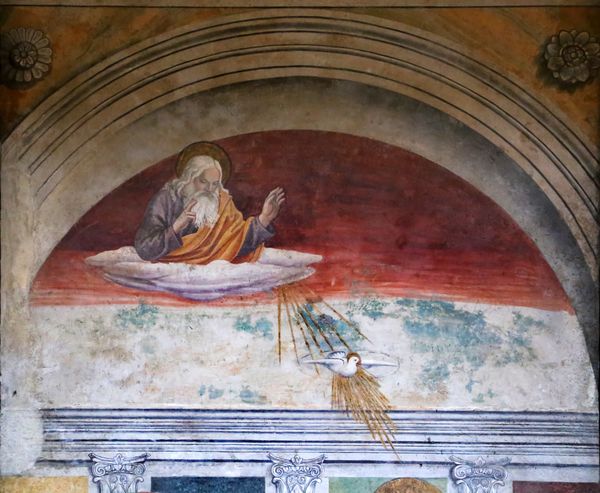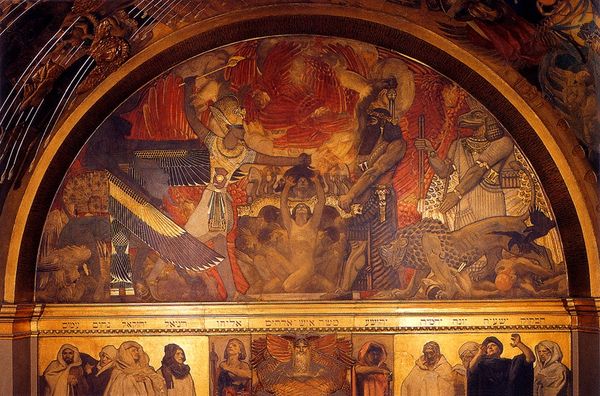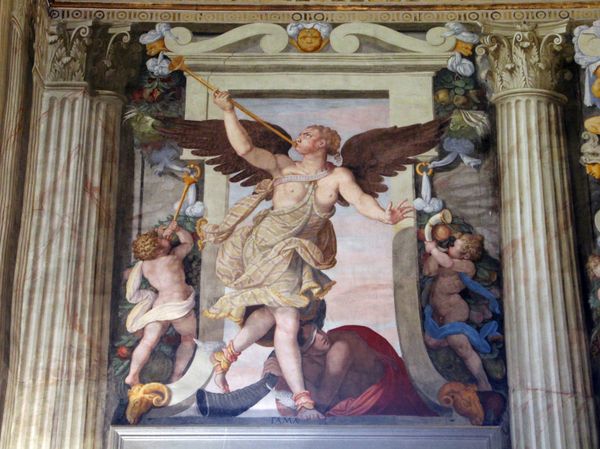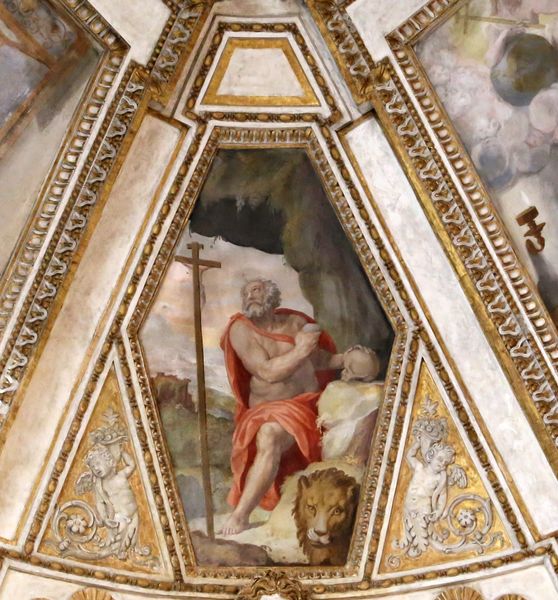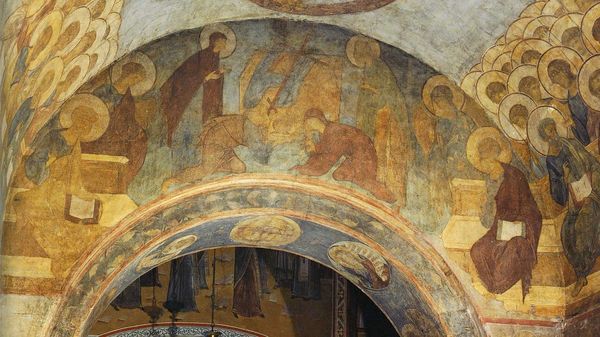
fresco, mural
#
portrait
#
fresco
#
oil painting
#
mexican-muralism
#
history-painting
#
portrait art
#
mural
Copyright: Public domain
Curator: As we look up, we see part of the mural painted on the ceiling of the Colegio de San Ildefonso by Jose Clemente Orozco in 1926, an artwork done in the fresco style. Editor: The sheer physical commitment of painting on a ceiling! My first impression is of heroic scale, even from this detail. It feels monumental, almost a cry from below. The tones are muted, though; mostly grays and browns, giving a weighty seriousness. Curator: Indeed. Orozco was one of the key figures in the Mexican muralism movement, along with Diego Rivera and David Alfaro Siqueiros. This work emerges from a revolutionary period, reflecting the struggles of post-revolutionary Mexico. I’d argue Orozco’s approach has a distinct philosophical undertone rooted in humanist existentialism. Editor: Definitely. He is clearly an allegorical figure, posed amidst symbols that, to me, look like ruined architecture, speaking to the rebuilding, both literal and figurative, of his nation. Notice how he almost bursts from the composition. Curator: I see this man as an embodiment of labor, almost proletarian defiance in the face of broken structures and social decay. This is consistent with the revolutionary spirit aiming for social transformation at the time. It critiques oppressive political and economic systems that create societal structures in the first place. Editor: The dynamism here is achieved with really bold brushstrokes, while the colour palette evokes classical antiquity; you can trace it back to ancient Greco-Roman prototypes of the idealized male nude. The positioning on the ceiling further enhances that grandeur. Curator: Precisely, but while celebrating revolutionary ideas, Orozco's murals are rarely straightforward endorsements of state power, his figures often embody internal conflicts. They exist in spaces riddled with tension, underscoring how lived reality rarely neatly aligns with ideological visions. Editor: A fitting reminder that even heroic symbols must carry an element of questioning and reflection. The damaged symbols almost underscore his defiance of those norms. I see the echoes here even in the modern age. Curator: Orozco encourages continuous reassessment of our commitments. He leaves us grappling with unresolved and often uncomfortable questions, about who wields power, for whom, and at what cost. Editor: Thank you, that exploration really allowed the figure to speak to me as not only a worker but as a defiant voice against broken pillars. Curator: Understanding his place in the narrative of Mexican muralism opens a critical path into how he reflected broader post-colonial critiques of power and representation.
Comments
No comments
Be the first to comment and join the conversation on the ultimate creative platform.
